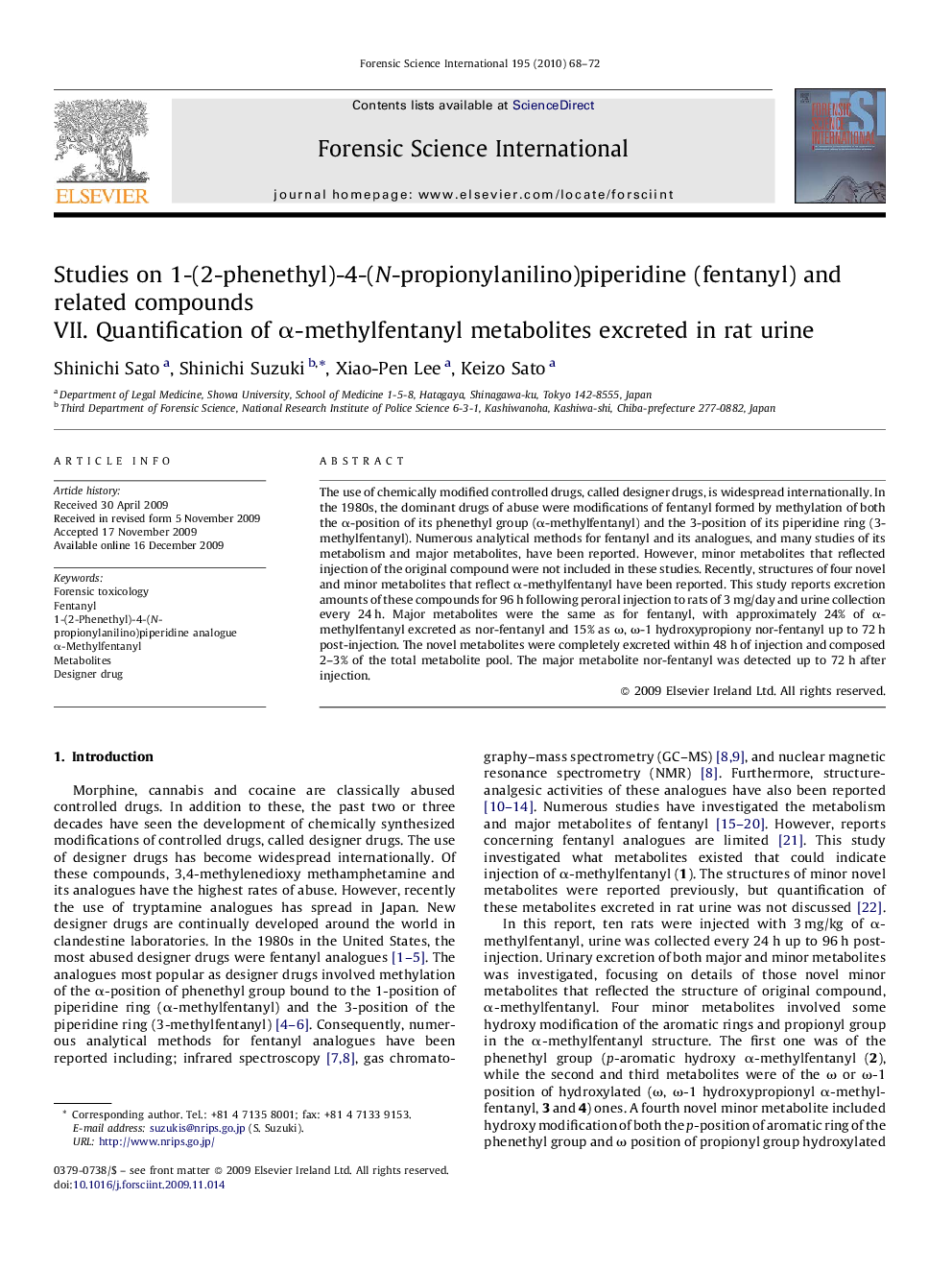| Article ID | Journal | Published Year | Pages | File Type |
|---|---|---|---|---|
| 97194 | Forensic Science International | 2010 | 5 Pages |
The use of chemically modified controlled drugs, called designer drugs, is widespread internationally. In the 1980s, the dominant drugs of abuse were modifications of fentanyl formed by methylation of both the α-position of its phenethyl group (α-methylfentanyl) and the 3-position of its piperidine ring (3-methylfentanyl). Numerous analytical methods for fentanyl and its analogues, and many studies of its metabolism and major metabolites, have been reported. However, minor metabolites that reflected injection of the original compound were not included in these studies. Recently, structures of four novel and minor metabolites that reflect α-methylfentanyl have been reported. This study reports excretion amounts of these compounds for 96 h following peroral injection to rats of 3 mg/day and urine collection every 24 h. Major metabolites were the same as for fentanyl, with approximately 24% of α-methylfentanyl excreted as nor-fentanyl and 15% as ω, ω-1 hydroxypropiony nor-fentanyl up to 72 h post-injection. The novel metabolites were completely excreted within 48 h of injection and composed 2–3% of the total metabolite pool. The major metabolite nor-fentanyl was detected up to 72 h after injection.
